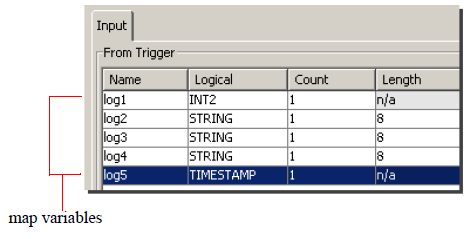To create each map variable separately, follow these steps:
- From the Transport Map window, under the
Input tab, click
Add
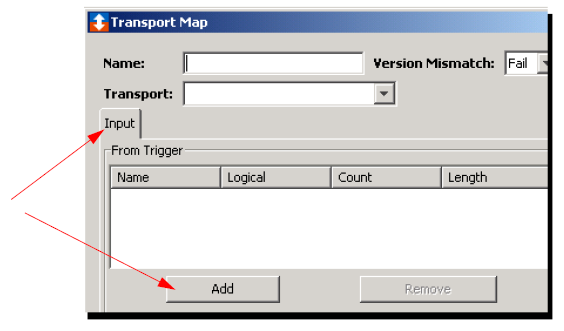
For transport maps that have an Output tab, you can also click Add. The process for adding a map variable to an Output tab is the same as adding a map variable to the Input tab.
The New Item window appears.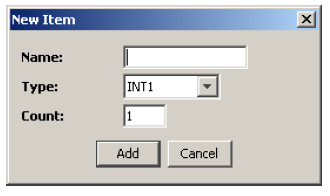
- In the Name box, type the name for
the map variable. For this example,
log1.
The name can be up to 64 characters and include letters, numbers, underscore, dash characters, and spaces. Special characters such as < > ' (single quotation) " (double quotation) are not allowed.
This name becomes available from the Variable column on the Transport Map window so that you can associate it with a payload format or database table. - Click the Type down-arrow, and
then select the data type that you want assigned to the
name. For this example INT2.
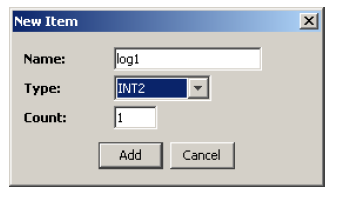
- In the Count box, accept the
default 1. The value specifies the dimension of the map
variable (for this example a scalar).
Input tab.
Arrays: If the data type were an array, you would change the value in the Count box to the number of elements in the array.Output tab.
For transport maps that have an Output tab, the Count box value indicates the maximum number of rows that you want the Select, Select with Delete, and Select with Update operation to handle. If Max Rows already contains a value, the value automatically appears in the Count box. Note that the value for Max Rows can be overridden on the trigger definition that uses the transport map. - Click Add.
A row appears on the Input tab with the information you added.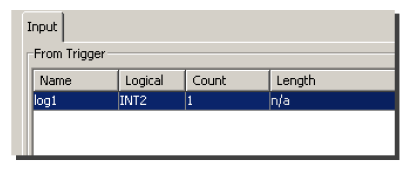
- Repeat the steps to add all required rows naming the map variables appropriately.
The final Input tab might look like
this: